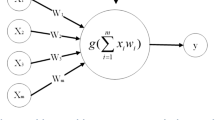Abstract
This paper is totally different than the research design and research method in the related literature for investigating how information technology-based reading and learning process of network distance teaching affects the assessment result in the past, that is, innovative research architecture and process is adopted. Here, quantile regression analysis is applied to the investigation of how the time and frequency of log-in curriculum, browsing teaching material, and curriculum discussion in learning process record affects the final-term assessment result of multimedia design digital teaching material subject. In depth research is done under such research architecture, and it is hoped that how each independent variable affects the final-term assessment result under different quantile can be investigated. In addition, this paper has applied new artificial neural network technology to set up expert system for teacher’s assessment result in distance teaching so as to reduce teacher’s teaching pressure, moreover, the result can be used as reference by general researchers and scientific education researchers. The research result shows that the use of quantile regression to analyze the influence of different variable on the teacher’s final-term assessment result of distance teaching is a feasible way; FOAGRNN model, as compared to other five models, has better forecasting capability.






Similar content being viewed by others
References
Al-Jarf RS (2004) The effects of web-based learning on struggling EFL college writers. Foreign Lang Ann 37(1):49–57
Aberson CL, Berger DE, Healy MR, Romero VL (2003) Evaluation of an interactive tutorial for teaching hypothesis testing concepts. Teach Psychol 30(1):75–78
Chen NH, Shih YC (1999) Functional analysis and practice of internet teaching system. In: 13th forum for computer aided teaching of the Republic of China
Tung YH, Chang CC (1996) Network learning process file system. In: ICCAI 8th forum of international computer assisted teaching
Wu HH (2000) The development of non-synchronous network teaching system and learning process file, Unpublished Master Thesis of Graduate Institute of Information and Computer Education at National Taiwan Normal University
Lee SH, Jung KH, Kang DW, Jung KH (2014) Pixel-based fusion algorithm for multi-focused image by comparison and filtering of SML map. J Converg 5(4):28–31
Kim TJ, Kim BG, Park CS, Jang KS (2014) Efficient block mode determination algorithm using adaptive search direction information for scalable video coding (SVC). J Converg 5(1):14–19
Binh HTT (2014) Multi-objective genetic algorithm for solving the multilayer survivable optical network design problem. J Converg 5(1):20–25
Vijayalakshmi S, Anpalagan A, Kothari DP, Isaac Woungang (2015) Erratum to: an optimizing pipeline stall reduction algorithm for power and performance on multi-core CPUs. Hum Centric Comput Inf Sci 5:9
Singh R, Singh P, Duhan M (2014) An effective implementation of security based algorithmic approach in mobile adhoc networks. Hum Centric Comput Inf Sci 4:7
Kolici V, Herrero A, Xhafa F (2014) On the performance of Oracle grid engine queuing system for computing intensive applications. J Inf Process Syst 10(4):491–502
Lv JG, Guo JF, Ren HX (2014) Efficient greedy algorithms for influence maximization in social networks. J Inf Process Syst 10(3):471–482
Li WM, Li XF, Yao MK, Jiang JL, Jin Q (2015) Personalized fitting recommendation based on support vector regression. Hum Centric Comput Inf Sci 5:21
Kim E, Helal S (2014) Training-free fuzzy logic based human activity recognition. J Inf Process Syst 10(3):335–354
Koenker R, Bassett G (1978) Regression quantiles. Econometrica 46:33–50
Allen DE, Kramadibrata AR, Powell RJ, Singh AK (2010) Using quantile regression to estimate capital buffer requirements for Japanese banks. In: Proceedings of the globalization, monetary integration and exchange rate regimes in East Asia Conference, Perth
Santos C, Cabral Vieira J (2012) An analysis of visitors’ expenditures in a tourist destination: OLS, quantile regression and instrumental variable estimators. Tour Econ 18(3):555–576
Levin J (2001) For whom the reduction counts: a quantile regression analysis of class size on scholastic achievement. Empir Econ 26:221–246
Pan WT (2012) A new fruit fly optimization algorithm: taking the financial distress model as an example. Knowl Based Syst 26:69–74
Specht DF (1991) A general regression neural network. IEEE Trans Neural Netw 2(6):568–576
Chen NH, Tsai WF (2001) Learning process analysis system for internet learning. TANET 2001 & ELCPE 2001, pp 231–236
Author information
Authors and Affiliations
Corresponding author
Rights and permissions
About this article
Cite this article
Pan, WT., Huang, CE. & Chiu, CL. Study on the performance evaluation of online teaching using the quantile regression analysis and artificial neural network. J Supercomput 72, 789–803 (2016). https://doi.org/10.1007/s11227-015-1599-1
Published:
Issue Date:
DOI: https://doi.org/10.1007/s11227-015-1599-1




